
New Database Allows Parents, Teachers, and Students to Find the Remote, Digital, and Microschooling Tools They Need
CER’s Essential Education database is searchable by grade, subject, format, and price.
WASHINGTON, D.C. — A new database of education resources helps people sort through the dizzying array of learning tools that aim to smooth the transition from in-person, traditional learning to remote, digital, and microschooling environments.
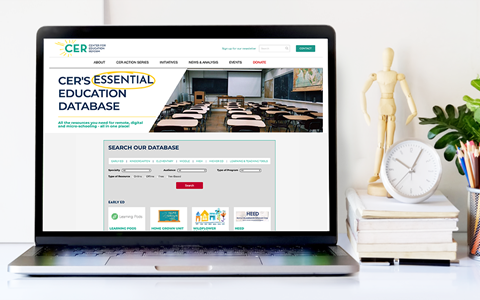 Built and hosted by the Center for Education Reform, the “Essential Education” database consists of resources that have been vetted by CER, a nonprofit that works to expand educational opportunities to ensure all have access to productive futures.
Built and hosted by the Center for Education Reform, the “Essential Education” database consists of resources that have been vetted by CER, a nonprofit that works to expand educational opportunities to ensure all have access to productive futures.
“Over the past year, parents have been forced to D.I.Y.-teach, while teachers have been forced to overhaul everything from their curricula to their capabilities,” said Jeanne Allen, CER’s founder and chief executive. “Meanwhile, students continue to struggle. CER’s unparalleled database offers these folks information they can trust and a way to navigate our new reality.”
For example, imagine that you’re the parent of an elementary-school student who needs help with reading. You’re interested only in online programs. Select those criteria, and “Essential Education” will present options that fit your needs (in this case, 26).
Want to create your own pandemic pod? “Essential Education” has options for early ed, kindergarten, elementary school, middle school, and high school.
Those options range from well-known names such as Dictionary.com, Khan Academy, and Scholastic to lesser-known tools such as eTAP, Outschool, and Why America?
There’s no charge or gate to use “Essential Education”; all the information is free and public.
CER’s Essential Education database is searchable by grade, subject, format, and price.
WASHINGTON, D.C. — A new database of education resources helps people sort through the dizzying array of learning tools that aim to smooth the transition from in-person, traditional learning to remote, digital, and microschooling environments.
 Built and hosted by the Center for Education Reform, the “Essential Education” database consists of resources that have been vetted by CER, a nonprofit that works to expand educational opportunities to ensure all have access to productive futures.
Built and hosted by the Center for Education Reform, the “Essential Education” database consists of resources that have been vetted by CER, a nonprofit that works to expand educational opportunities to ensure all have access to productive futures.
“Over the past year, parents have been forced to D.I.Y.-teach, while teachers have been forced to overhaul everything from their curricula to their capabilities,” said Jeanne Allen, CER’s founder and chief executive. “Meanwhile, students continue to struggle. CER’s unparalleled database offers these folks information they can trust and a way to navigate our new reality.”
For example, imagine that you’re the parent of an elementary-school student who needs help with reading. You’re interested only in online programs. Select those criteria, and “Essential Education” will present options that fit your needs (in this case, 26).
Want to create your own pandemic pod? “Essential Education” has options for early ed, kindergarten, elementary school, middle school, and high school.
Those options range from well-known names such as Dictionary.com, Khan Academy, and Scholastic to lesser-known tools such as eTAP, Outschool, and Why America?
There’s no charge or gate to use “Essential Education”; all the information is free and public.
Founded in 1993, the Center for Education Reform aims to expand educational opportunities that lead to improved economic outcomes for all Americans — particularly our youth — ensuring that conditions are ripe for innovation, freedom and flexibility throughout U.S. education.











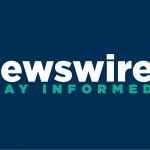

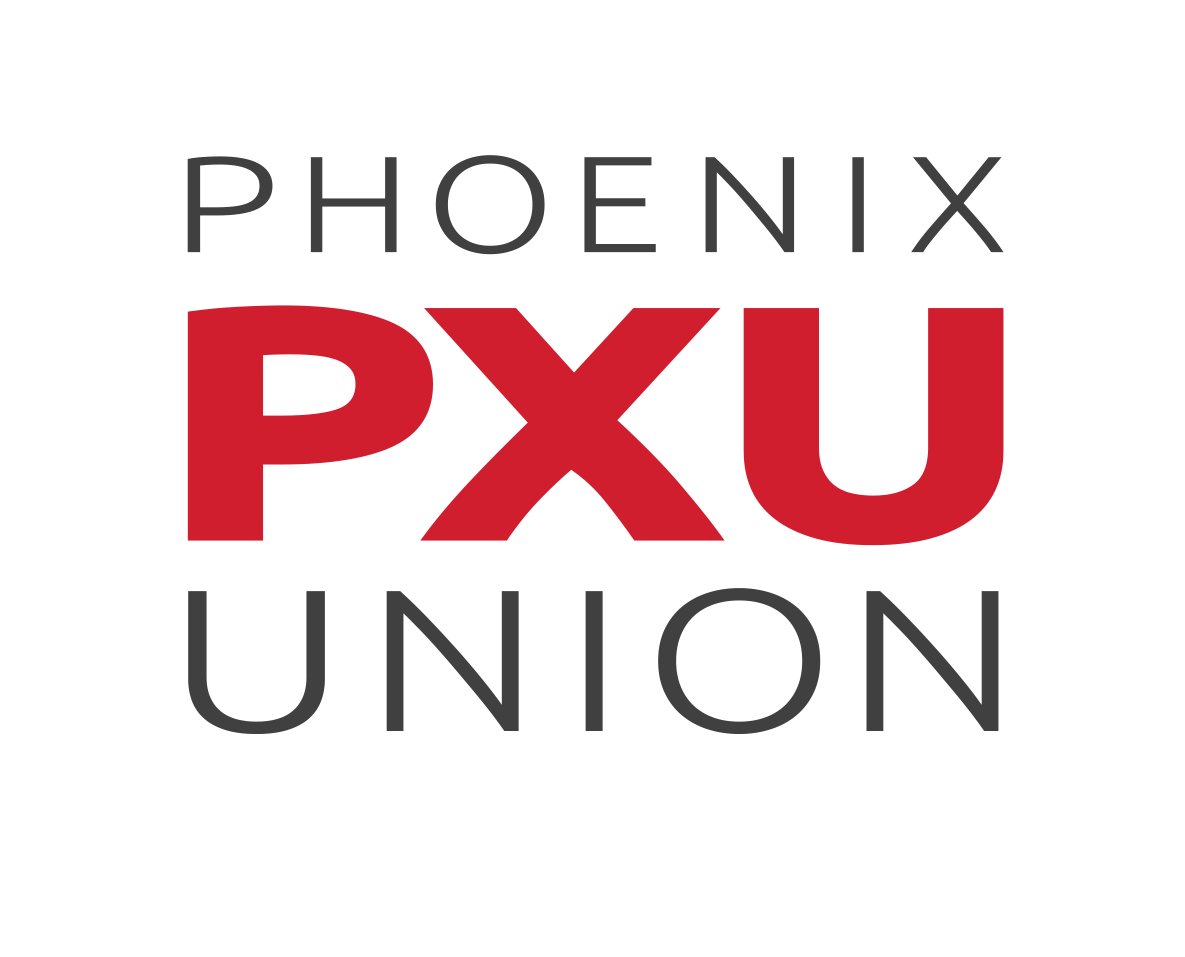

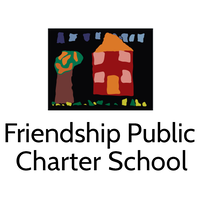



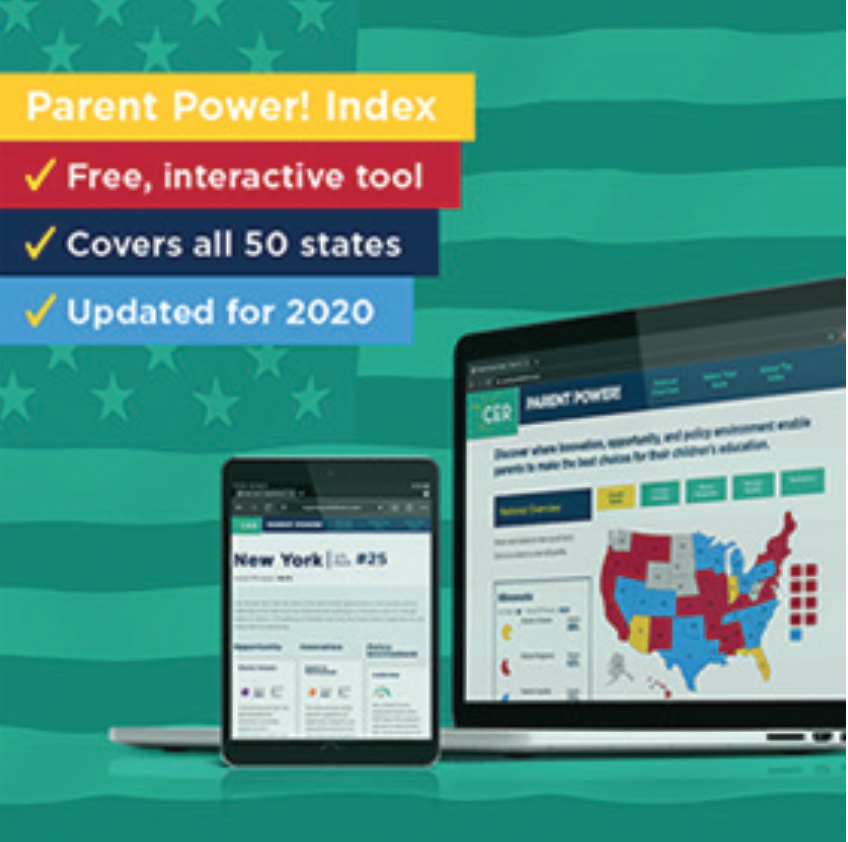 GOT PARENT POWER? When traditional education works for families, everyone wins. But when it fails parents, as it has miserably this year, they take action. If you’re not in-the-know on what level of education opportunity and innovation is provided by your state, and you are ready to act, now is the time to check back in with CER’s
GOT PARENT POWER? When traditional education works for families, everyone wins. But when it fails parents, as it has miserably this year, they take action. If you’re not in-the-know on what level of education opportunity and innovation is provided by your state, and you are ready to act, now is the time to check back in with CER’s 
 BLAINE BIGOTRY LIVES. The news item seems like it belonged in an episode of “The Walking Dead”. A “Strong Students Scholarship Program” which would have given 90% of the state money spent per-student to parents to use on non-public education for their children was shelved – largely because a couple of
BLAINE BIGOTRY LIVES. The news item seems like it belonged in an episode of “The Walking Dead”. A “Strong Students Scholarship Program” which would have given 90% of the state money spent per-student to parents to use on non-public education for their children was shelved – largely because a couple of 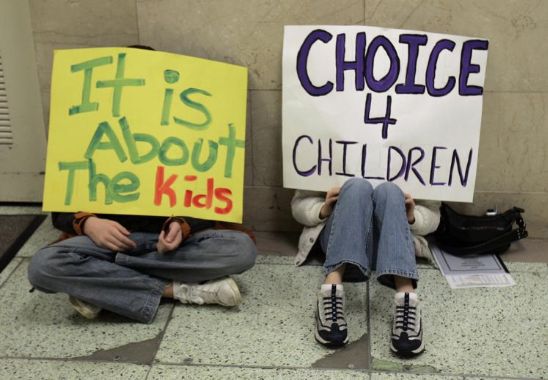 PROMISING SPRING BLOOMS. There is much promising news across the country. Proving they think big
PROMISING SPRING BLOOMS. There is much promising news across the country. Proving they think big 
 US DEPT OF ED NEEDS A LEPRECHAUN NOT A LABOR CZAR. The Biden Admin is placing an advisor for Labor Relations there, causing
US DEPT OF ED NEEDS A LEPRECHAUN NOT A LABOR CZAR. The Biden Admin is placing an advisor for Labor Relations there, causing 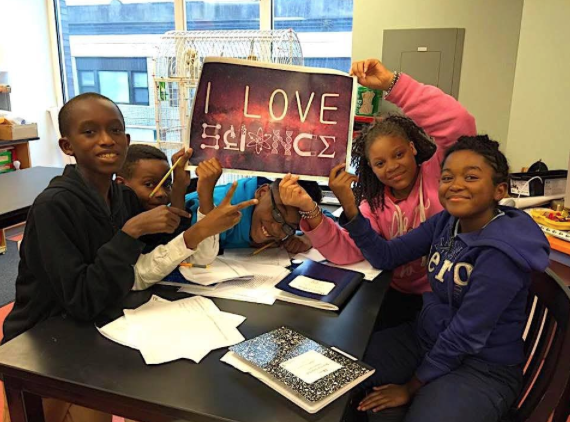

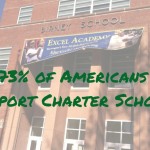
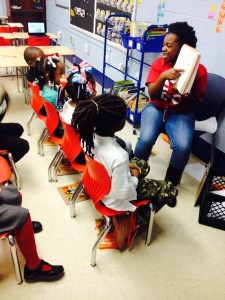
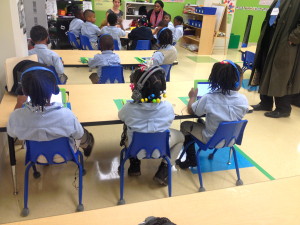
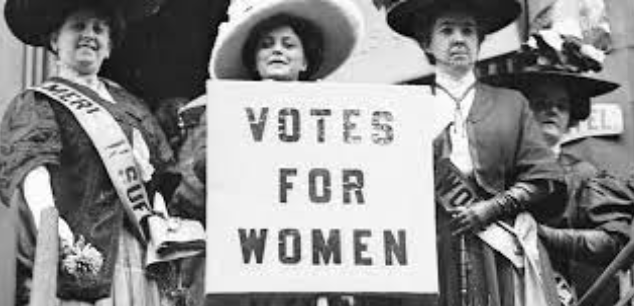 We’re in the midst of Women’s History Month, and apropos of that, moms, grandmas, sisters and women from all walks of life, colors and economic status are leading the fight to open classroom doors and get kids back in school.
We’re in the midst of Women’s History Month, and apropos of that, moms, grandmas, sisters and women from all walks of life, colors and economic status are leading the fight to open classroom doors and get kids back in school.
 FREEDOM IS CONTAGIOUS. Moms — and dads — are realizing the advantages of remote, or distance, learning for some of their kids. That choice should be theirs alone to make. A new poll by National Public Radio, reveals the depth of this feeling, as
FREEDOM IS CONTAGIOUS. Moms — and dads — are realizing the advantages of remote, or distance, learning for some of their kids. That choice should be theirs alone to make. A new poll by National Public Radio, reveals the depth of this feeling, as 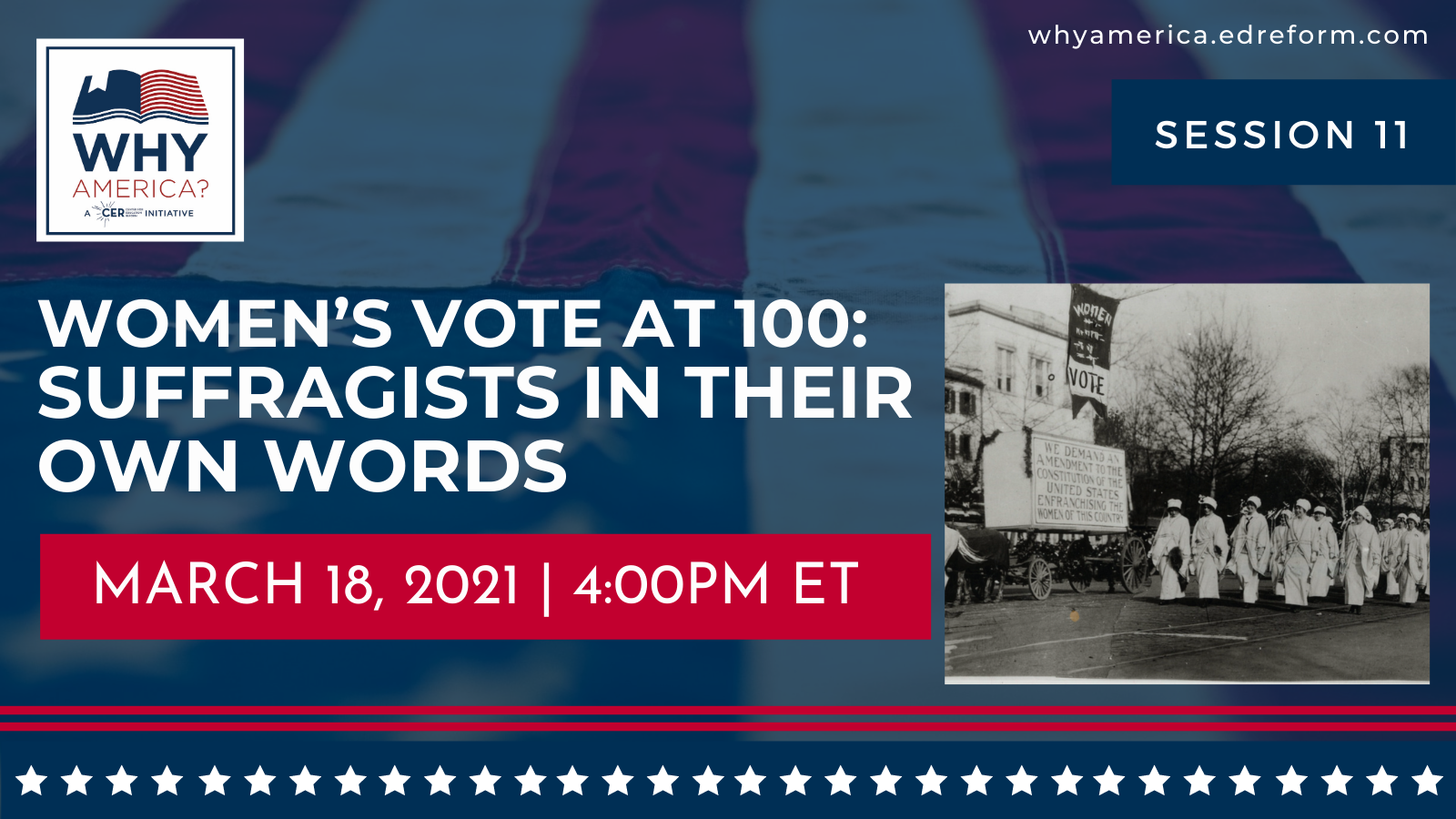 GIVE WOMEN THE RIGHT TO VOTE? Go back in time with CER’s
GIVE WOMEN THE RIGHT TO VOTE? Go back in time with CER’s 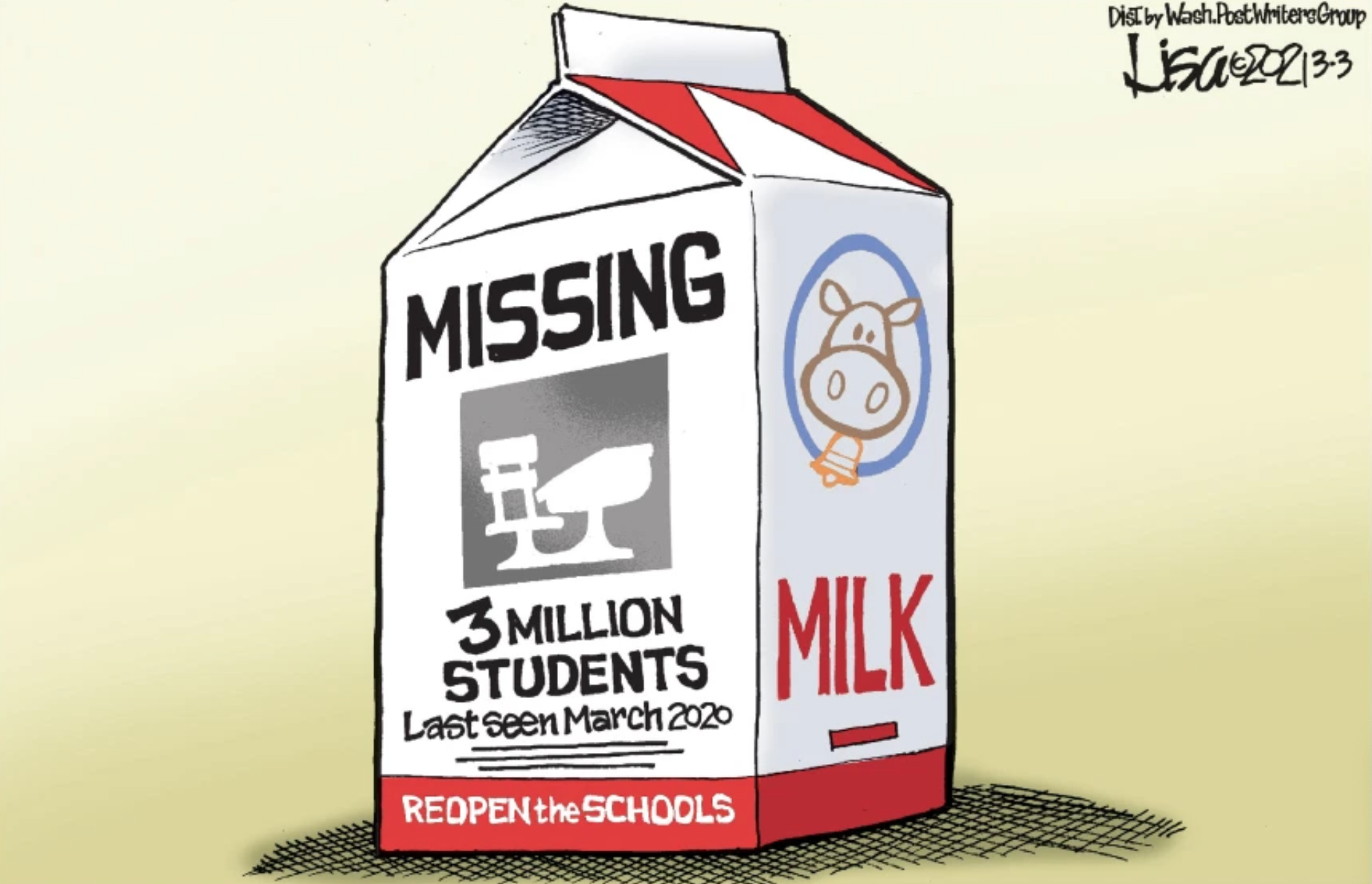 URGENT ACTION ALERT. San Diego Schools superintendent Cindy Marten has been nominated to be the Deputy Secretary of Education. She tried to deny public charter schools funding, due process and appeal rights. She blocked the growth and replication of public charters. Opposition to her is being led by San Diego’s Black and Latino families who want an alternative to their underperforming neighborhood schools. Urge your senators to vote “NO” because of her poor record on choice, charters and parent support. We make it
URGENT ACTION ALERT. San Diego Schools superintendent Cindy Marten has been nominated to be the Deputy Secretary of Education. She tried to deny public charter schools funding, due process and appeal rights. She blocked the growth and replication of public charters. Opposition to her is being led by San Diego’s Black and Latino families who want an alternative to their underperforming neighborhood schools. Urge your senators to vote “NO” because of her poor record on choice, charters and parent support. We make it  PARENT POWER….VOX POPULI… A tidal wave of “parent power” is demanding education for their kids, proving again that father…and mother… and grandmother and grandfather, and loving guardians… know best! And you know we’ve been talking about
PARENT POWER….VOX POPULI… A tidal wave of “parent power” is demanding education for their kids, proving again that father…and mother… and grandmother and grandfather, and loving guardians… know best! And you know we’ve been talking about  PARENTS IN WINE COUNTRY are also demanding open classrooms. Creative folks in the North San Francisco Bay Sonoma County
PARENTS IN WINE COUNTRY are also demanding open classrooms. Creative folks in the North San Francisco Bay Sonoma County 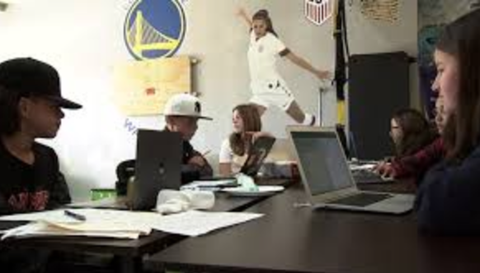 GARAGE PODS? A short drive across the San Francisco Bay Bridge in Benicia are frustrated parents who couldn’t wait any longer. They
GARAGE PODS? A short drive across the San Francisco Bay Bridge in Benicia are frustrated parents who couldn’t wait any longer. They 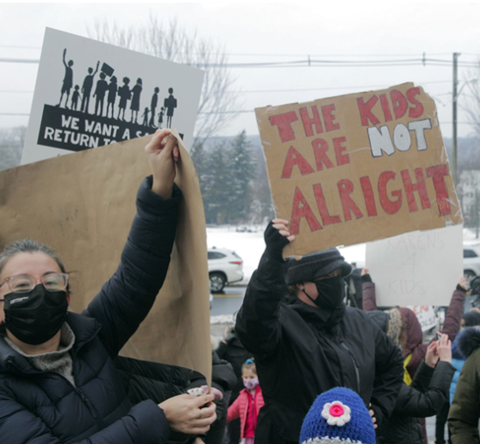 A SNOWSTORM DIDN’T STOP
A SNOWSTORM DIDN’T STOP 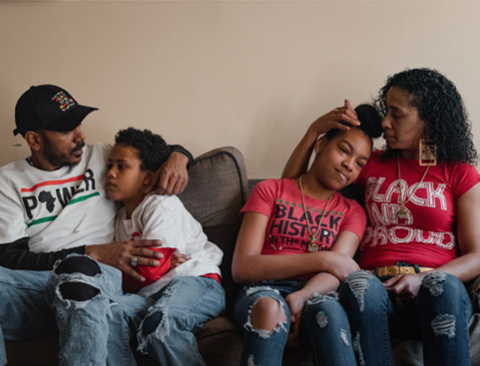 PARENTS ARE MOVING FOR GOOD EDUCATION. A mom in Philly wants to move to Florida to educate her children, others are
PARENTS ARE MOVING FOR GOOD EDUCATION. A mom in Philly wants to move to Florida to educate her children, others are 


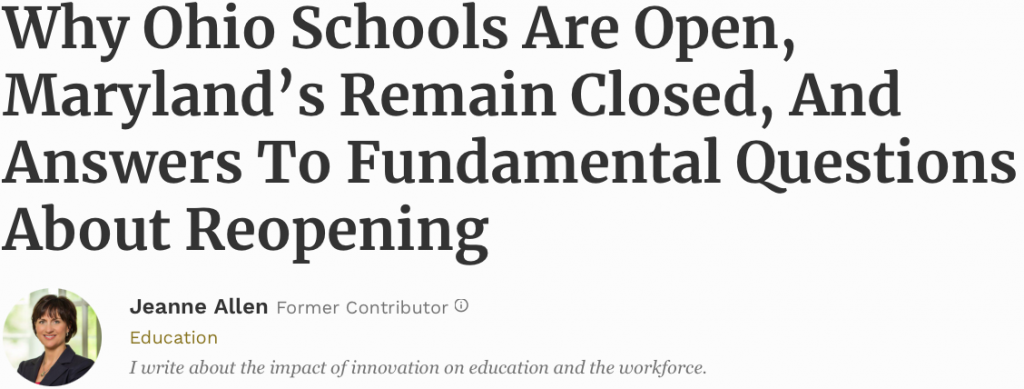
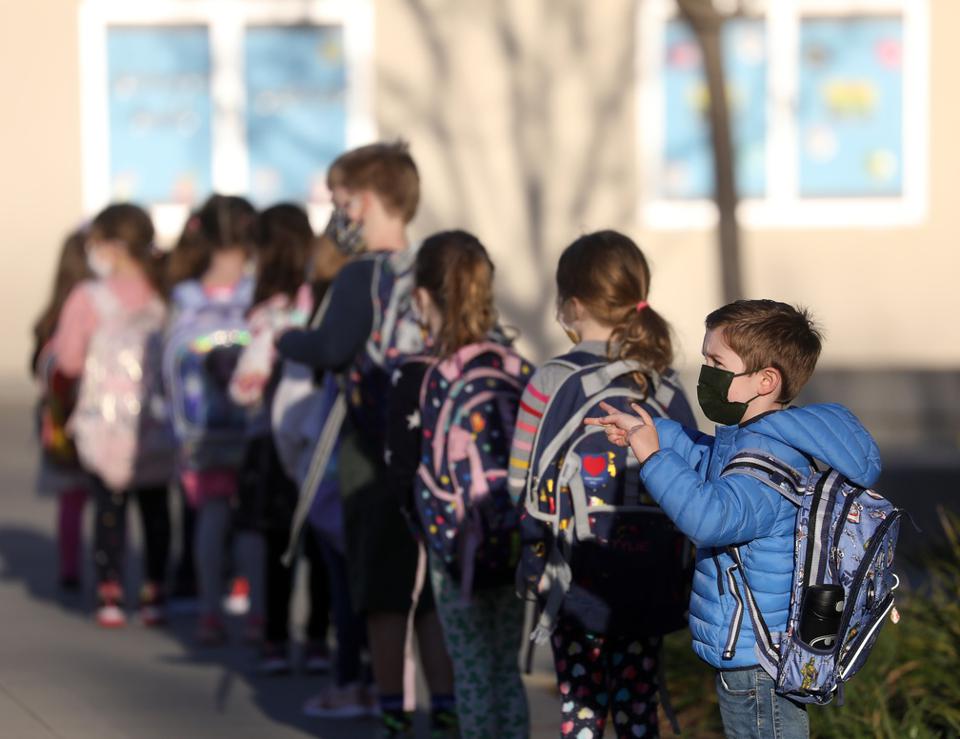
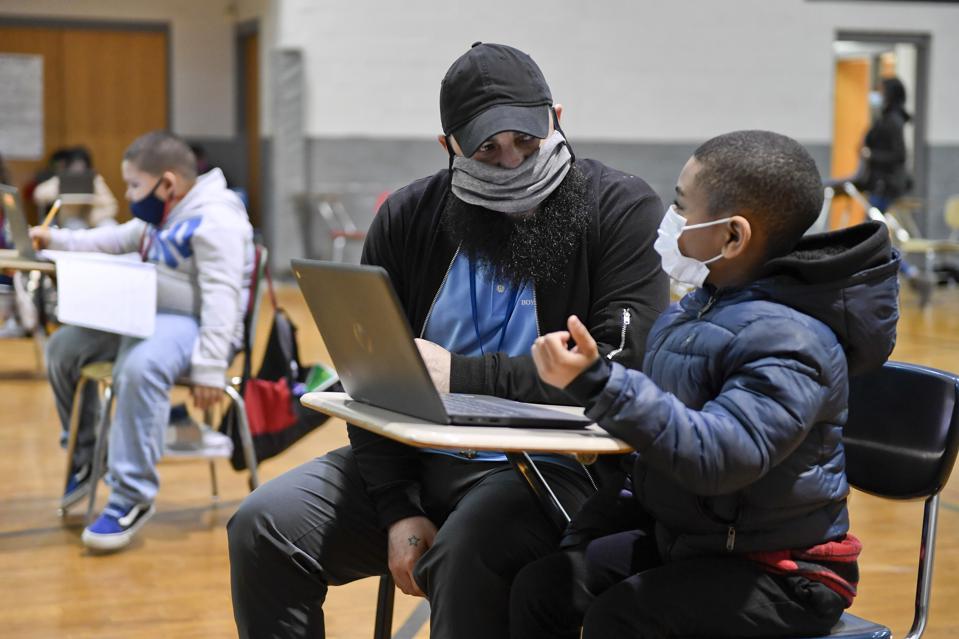
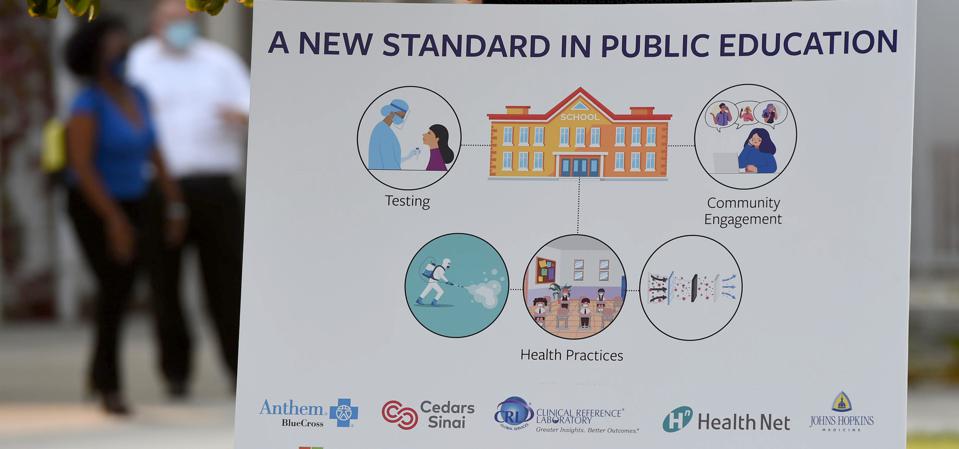
A New Report By The Florida League Of Women Voters Claims Educational Diversity Is The Wrong Road In Education
By Jeanne Allen, Founder and CEO of CER
They are wrong.
In 2020, the teachers unions organized a protest in Tallahassee against the very focus of that King march for education justice, demanding more money for education, and threatening work stoppages. The heads of the two national teachers unions were there leading the charge for what would become one of many protests throughout the year, in primarily red-leaning states, where educational choice has become mainstream and helped diversify schooling options for parents.
A few months later, throughout the United States, almost all schools would universally close from COVID-19 and render all students remote for at least several months, if not the full year. For months, battles and high pitched media analyses have documented the reopening saga and the extent to which teachers unions and their allies have kept schools closed, even after billions of dollars began flowing to allegedly ensure that schools could reopen, first in the fall of 2020, then in winter, then in early 2021, and then in the spring of 2021. But barely half of the nation’s schools are actually open full-time, in-person as of this writing, and the unions are continuing to challenge whether the billions headed toward public schools for safety and reassurance will even be enough.
The few exceptions to the rule have been only with certain types of schools and in certain types of states. First, it has been well-documented that private and predominantly Catholic schools have remained open for nearly the entire school year in almost every jurisdiction in the nation. Second, states that have robust educational choice programs in place are more likely to have had both public schools and private schools re-open to students for a full or a majority of the year. Nowhere is this more true than in Florida, whose two decades of educational choice and charter school programs have turned educational performance for the poorest students on its head. The National Assessment of Educational Progress is but one of many objective measures of the increase created by these programs. Because of the diversity and flexibility of schools of choice in Florida, decisions about reopening were made on a community basis, and its leaders were more willing to make schools work for students no matter how difficult and to put science above politics during Covid.
All of this (just a fraction of the history of Florida’s major turn-around on education) is why an ideological report about the most successful of education scholarship programs in the state and a national model demands not only scrutiny but skepticism.
The once highly respected League of Women Voters has long opposed educational choice programs. The author of the latest report by the League in Florida, Dr. Sally Butzin, claims that the program that created the opportunity for the more than 100,000 students who are able to attend the school of their choice has somehow duped the taxpayer through “shadowy operations;” and further, that the practice of giving companies tax credits for contributions to the fund that creates educational scholarships is shady, lacks transparency and is bad public policy. One wonders if she has looked at the charitable contributions we all deduct on our tax returns annually – or the credit U.S. businesses receive for everything from wind to solar power to stadiums.
It’s also clear that the author may not understand how to read a federal 501(c)(3) 990. She reports that Step Up For Students, the leading and oldest scholarship granting organization (SGO) in the state, has billions in assets, when in reality a non-profit reports its pledges as income when they are made. Non-profits like Step Up have to continually work to secure pledges that ensure enough funds exist to cover scholarships year after year.
In recounting her opposition to this program last January 2020 on the occasion of the aforementioned teachers march, Butzin wrote in the Tallahassee Democrat:
“Soon a parallel school system began to grow…this led to publicly funded vouchers for private schools. Ironically, these new schemes (emphasis added)had no accountability to taxpayers, as well as blatant conflicts of interest where the politicians who were creating these parallel schools were benefiting financially.
“And this parallel system has bled the life out of public education, as billions of dollars flowing to it have left millions of children behind.”
Schemes? Benefiting financially? Any evaluation should be guided by a tangible look at the benefits of the program.
The Florida Tax Credit Scholarship now serves 100,000 students every year, two-thirds of them Black and Hispanic. The evidence shows students are consistently getting better outcomes – at a substantially lower cost, which is why hundreds of corporations choose to contribute to non-profit groups like Step Up For Students.
A decade’s worth of standardized test score analyses shows that students on scholarship are typically among the lowest-performing students in their prior public schools. But instead of falling further behind each year, they’re now gaining a year’s worth of knowledge in a year’s worth of time. A 2019 study by the Urban Institute found those same students are up to 43 percent more likely to enroll in four-year colleges than their public school peers, and up to 20 percent more likely to earn bachelor’s degrees.
These gains come at a lower cost. The scholarship is worth 59 percent of per-pupil spending in Florida district schools and it enables students to choose from thousands of schools that are diverse in size, demographics, educational focus and location. A review of eight independent financial studies over the years demonstrated that the scholarships save taxpayers money that can be re-invested positively in public schools as well.
The scholarship isn’t hurting traditional public schools academically either. As Florida ramped up school choice, the academic trend lines rose for all its public schools.
Florida’s graduation rate was 54 percent in 2001, the year the Florida Tax Credit Scholarship was created. It’s 90 percent now. Florida now ranks No. 3 in K-12 Achievement, according to Education Week, and No. 2 in AP exam success, according to the College Board.
The Florida League of Women Voters’ only reference to educational quality is rhetorical:
“When asked about quality control and learning outcomes, voucher proponents always revert to ‘parent choice.’ It is up to the parents to make those determinations about ‘what is best for their child.’
“This assumes that all parents are up to the task. Are we on the road back 200 years ago when schooling was solely a parent’s responsibility? Parents back then cobbled together clusters of one-room schoolhouses and private tutoring. Parents with means had access to private schools with qualified teachers, while the Catholic Church created a system of parochial schools.
“As the industrial age approached, it was clear that this parent-driven school system was inadequate for a modern society. In 1838, Horace Mann founded and edited The Common School Journal. Mann is considered the father of public education.”
Butzin goes on to enumerate Mann’s principles for public education, criticizing the Florida legislature for allegedly unwinding that vision, seeming to prefer a “modern” vision of school created nearly 200 years ago! Among hundreds of other advances, the advent of brain science not available in prior decades has proven the importance of variety, diversity and individualization in education and learning, and it is agnostic about the kind of school one attends, whether it’s public, private, or charter, or whether it’s a microschool, wholly virtual, or a traditional brick-and-mortar schoolhouse.
This is the future road for education. It should be celebrated and built upon, not condemned and distorted.
Founded in 1993, the Center for Education Reform aims to expand educational opportunities that lead to improved economic outcomes for all Americans — particularly our youth — ensuring that conditions are ripe for innovation, freedom and flexibility throughout U.S. education.